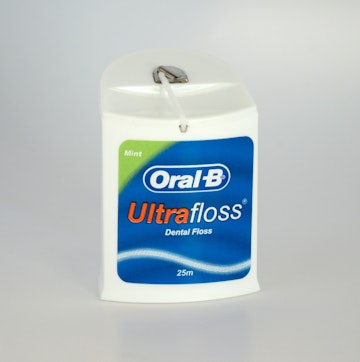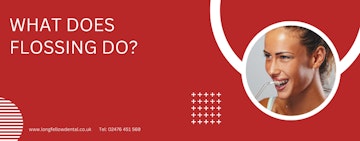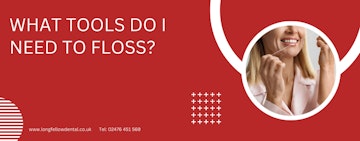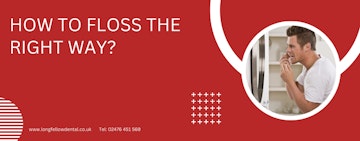
How to Floss the Right Way
No, we aren't talking about the dance craze that took over social media in 2016. Flossing is an essential part of your oral hygiene routine that you really shouldn’t ignore. Flossing helps to get to those hard to reach areas of your mouth that might be missed by brushing alone.
In this guide, we’re taking a deep dive into the world of dental floss. We’re exploring why you need to add this step to your oral health routine, how to do it correctly, and how to spot the signs that you might be flossing incorrectly.
Reading about flossing online can only help so much. If you need a demonstration and advice on how to floss your teeth, get in touch with our dental hygienist team. We can give you personalised advice and support on how to brush and floss your teeth effectively.

What does flossing do?
Flossing gets between the teeth to remove food particles, bacteria, plaque and tartar that gets trapped between the teeth. It’s an essential step for ensuring that all areas of your mouth are clean and hygienic. If you skip flossing, you could be missing out on cleaning as much as 40% of the surface of your teeth.
Can I skip flossing?
No, you can’t skip flossing. A shocking number of UK adults admit to never flossing their teeth, and this is likely down to a lack of education around flossing. If you don’t floss, you’re leaving as much as 40% of the surface of your teeth uncleaned. This can lead to bad breath and a buildup of plaque and tartar that could lead to gum disease. Gum disease can cause your gums to recede and this can create even larger pockets between your teeth for food debris to collect. In short, flossing really needs to be part of your daily routine.

What tools do I need to floss?
The tools you need to floss correctly will all depend on your teeth. There are many different flossing tools available, including:
Traditional dental floss. This is a string-like floss with a waxy coating that helps to dislodge food and plaque from between your teeth. It might have a minty flavour to leave you with a fresh taste.
Dental floss tape. This type of dental floss is thinner and flatter and is designed to cover a larger surface area between teeth that are very close together. If you have crowded teeth, dental floss tape might be more effective and easier for you to use.
Floss harps. These are a small plastic tool with a small amount of floss suspended between two hooks. This allows you to easily reach your teeth without having to put your fingers into your mouth. If you have a small mouth or you struggle with mobility, floss harps can be highly effective.
Interdental brushes. For larger gaps between your teeth, interdental brushes might be more suitable. These are small flexible wire brushes, not entirely unlike a bottle brush (but much smaller). They come in a range of sizes to help you clean between your teeth if you have larger gaps and pockets close to the gum line.

How to floss the right way?
Once you have selected the right tools, it’s time to lay the groundwork. You should always floss after brushing so that the dental floss can push the residual toothpaste between your teeth where it will be the most useful.
You need to push the dental floss into the gaps between every tooth, focusing on the area closest to your gum line. If you have never flossed before or you floss infrequently, it might be a little painful and your gums may bleed. This is to be expected and it should stop happening as your gums get used to the flossing. If your gums continue to bleed, even after you have been flossing for a while, visit the dentist as it could be a sign of gum disease.
Gently move the floss, tape or dental harp between your teeth to ease any debris or plaque away from the tooth surface. You can then discard the flossing tool. You can reuse your interdental brushes for around 1-2 weeks, or until the bristles start to look flattened. Make sure you rinse them after use.
How do I know if I’m flossing correctly?
The best way to find out if you are flossing correctly is to visit your dentist. Your dentist absolutely knows if you have been flossing regularly or if you only floss in preparation for your appointment. If you are flossing correctly, your teeth and gums will look very healthy and clear of debris.
If you would like more advice on how to floss your teeth correctly, book an appointment with our dental hygienist. They can offer feedback on you flossing technique and make sure that you are making the most of your oral hygiene routine.

Call us to make your appointment
Interest-free credit available
Worried about the cost of treatment? We offer financing plans to allow you to spread the cost.